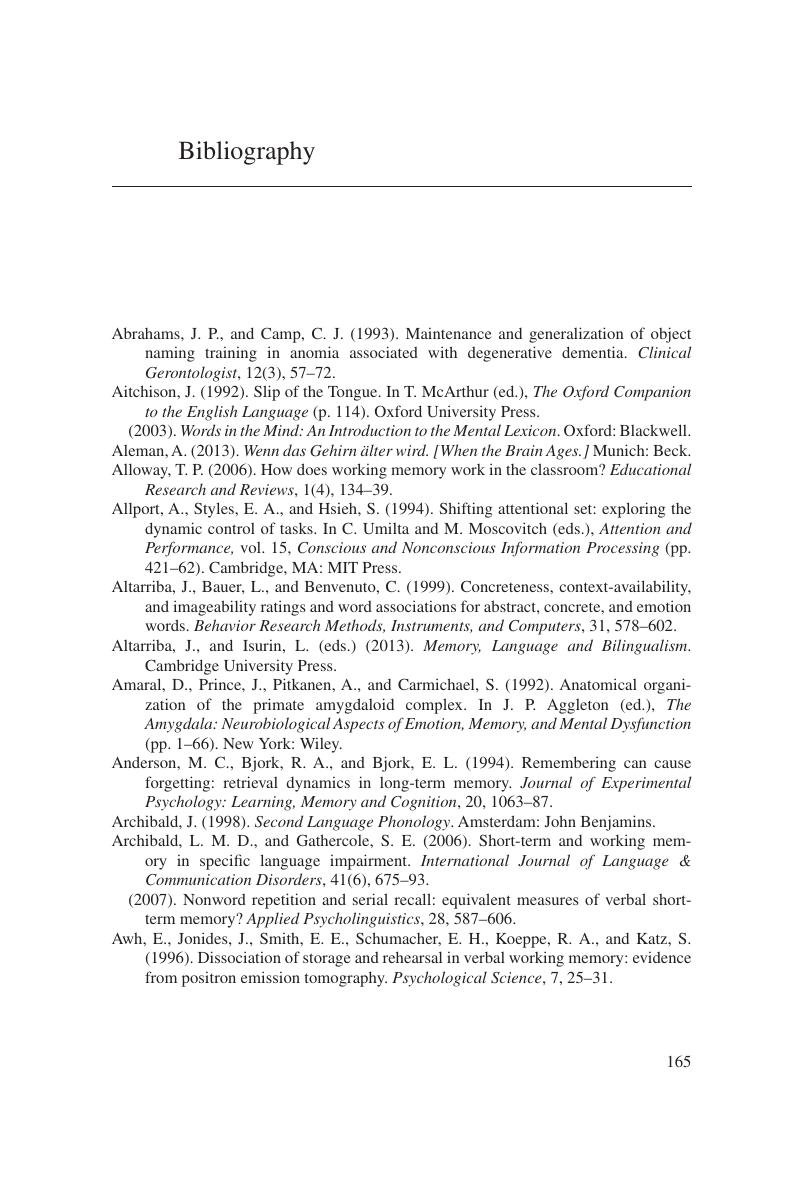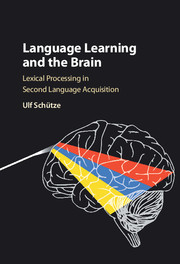Book contents
- Language Learning and the Brain
- Language Learning and the Brain
- Copyright page
- Dedication
- Contents
- List of Figures
- Preface
- Introduction
- 1 A New Word
- 2 Memory, Language, and the Brain
- 3 Synaptic Connections
- 4 Cognitive Load
- 5 First and Second Language Acquisition
- 6 The Bilingual Lexicon and Speaker
- 7 Spacing
- 8 Word Analysis
- 9 Learning and Teaching
- Bibliography
- Index
- References
Bibliography
Published online by Cambridge University Press: 10 November 2016
- Language Learning and the Brain
- Language Learning and the Brain
- Copyright page
- Dedication
- Contents
- List of Figures
- Preface
- Introduction
- 1 A New Word
- 2 Memory, Language, and the Brain
- 3 Synaptic Connections
- 4 Cognitive Load
- 5 First and Second Language Acquisition
- 6 The Bilingual Lexicon and Speaker
- 7 Spacing
- 8 Word Analysis
- 9 Learning and Teaching
- Bibliography
- Index
- References
Summary

- Type
- Chapter
- Information
- Language Learning and the BrainLexical Processing in Second Language Acquisition, pp. 165 - 176Publisher: Cambridge University PressPrint publication year: 2016



